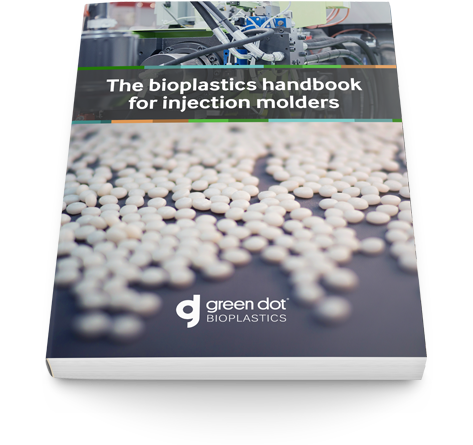Bioplastics 101: An introduction to key terms in sustainable plastics
Consumers want to feel good about the products they purchase. Part of that is sustainability—they want to buy something green because it makes them feel like they are doing something good for the Earth. Over 70 percent of consumers have shown that they deeply care about whether a product they buy is sustainable.
In 2012, the Accenture consulting agency conducted a survey of 250 senior executives in the U.K., U.S., Japan, Germany, France, China, Brazil, and India. They found that the vast majority said sustainability was vital to the future growth of their companies. Of those surveyed, 62 percent said their investments were motivated by customer expectations for sustainable products and were viewed as an opportunity to drive growth.
Luckily, there are many ways to make plastic more sustainable, and the confluence of available technologies and consumer preferences are making it more feasible than ever before. From using more renewable content and reclaiming and recycling material, to reducing the energy needed for manufacturing and returning material to nature at the end of its life, bioplastics seem poised to take their spot in the limelight. As another promising development, it is now possible to make more sustainable plastics with unique physical performance and aesthetic qualities. This means these materials are not only better for the environment and price-competitive but are also excelling from a performance standpoint.
But there are still some significant hurdles to overcome. One of the most formidable being enhancing consumer understanding of the benefits of bioplastics and the various options on the market. This paper will attempt to clear up some of the vocabulary surrounding these materials and some of the common myths that surround them.
Defining bioplastics
No single definition for sustainability exists. There are a number of characteristics that a product can possess—both independent of one another and together—that will determine a product’s sustainability. Here are a few bioplastics terms it can be helpful to keep straight when investigating the feasibility of a material for a product:
- Bioplastics are a family of materials with differing properties and applications. A material is defined as a bioplastic if it is either biobased, biodegradable or features both properties.
- Biobased materials are made from organic (carbon-based) materials that contain in whole or part biogenic (biological) carbon – replacing petrol/fossil carbon with bio/renewable carbon. In the United States, the USDA Biopreferred Program certifies materials as biobased. Products made with certified biobased materials can receive preferential purchasing from Federal procurement agencies. The percentage of renewable material necessary to meet this requirement varies according to the product.
- Biocomposite materials combine biomaterials like wood, starch, flax, jute, hemp, and other similar materials with traditional plastics. These materials are used to imbue a natural aesthetic and enhance physical characteristics while reducing the amount of non-renewable petroleum-based plastic.
- Biodegradable is the ability of a material to undergo biodegradation, a chemical process during which micro-organisms that are available in the environment convert materials into natural substances such as water, carbon dioxide, and compost. The process of biodegradation depends on the surrounding environmental conditions.
- Compostable plastic products are defined by ASTM International standards 6400 and 6868. These standards require that the material biodegrades in a certain period of time and leaves no toxic residue in the soil.
A multi-faceted approach
Just as early installations of wind turbines and rooftop solar panels haven’t eliminated the need for fossil fuels completely, bioplastics won’t be the silver bullet that eliminates the planet’s need for fossil fuels. But they are a more sustainable alternative to petroleum-based plastics, and they are ready to be substituted into plastics manufacturing operations right now.
Pursuing four avenues for reducing the environmental impact of plastics should prove more effective than any one strategy on its own. Together, the following strategies utilized in the production of bioplastics have an effect on both beginning-of-life and end-of-life issues surrounding plastic production.
Renewable feedstock
Organic materials like starch and other natural fibers act as substitutes for petroleum-based feedstock and reduce the amount of greenhouse gas emissions associated with plastic production. Biobased plastic resins can be made to behave similarly to traditional plastics in the manufacturing phase and to preserve much of the look and feel of purely petroleum-based plastics.
Did you know? – Reducing the amount of petroleum-based plastics by just 10% saves 280 million barrels of oil a year, reducing CO2 emissions the equivalent of the Co2 sequestrated by 250 million acres of forests.
Reclaimed feedstock
One industry’s byproducts are another industry’s path to sustainability. Wood fibers from milling operations and agricultural waste materials can also be used to substitute out some of the petroleum-based feedstock that goes into traditional plastics. In some cases, up to 70 percent of non-renewable resources can be replaced. With widespread use, reclaimed feedstock could make a serious dent in the amount of fossil fuels used by the global plastics industry.
Did you know? – Reducing the amount of petroleum-based plastics by 25% can decrease greenhouse gas emissions equivalent to removing 16.5 million passenger cars from the road every year.
Biodegradable materials
Compostable plastics can help reduce landfill waste, especially when used for foodservice in conjunction with composting of food waste, and in many packaging applications. In some cases, such as mulch films, biodegradability provides products with a functional advantage.
Did you know? – Increasing composting of food scraps by 25% in the U.S. would decrease GHG emissions equivalent to saving more than 15 million barrels of oil per year.
Recycled and upcycled goods
Opting for recycled plastic over virgin plastic yields tremendous energy savings. Upcycling reclaimed and recycled materials into biocomposites used for high-quality durable goods not only lightens the environmental footprint of these products, but also creates and expands markets for waste materials that may otherwise be discarded in a landfill.
Did you know? – Using one ton of recycled plastic to replace some or all of the virgin petroleum-based feedstock can save 16.3 barrels (685 gallons) of oil, 30 cubic yards of landfill space, and 5,744 kWh energy – that’s enough energy to power the average American home for over 6 months.
Conclusion
There are a growing variety of more sustainable plastics. As demand continues to rise, so will the utilization of these materials in products and packaging. Consumers want to know about the materials used in a product, how and where it is made, how far it travels and how it is packaged, but they may have varying criteria for what makes a product more sustainable. Successful companies are differentiating their products by clearly stating the environmental benefits of their product, whether it be using more renewable materials, using reclaimed or recycled materials, or materials that can be returned to nature when their useful life has ended.

The bioplastics handbook for injection molders
Get a straightforward discussion of processing best practices for bioplastics.


